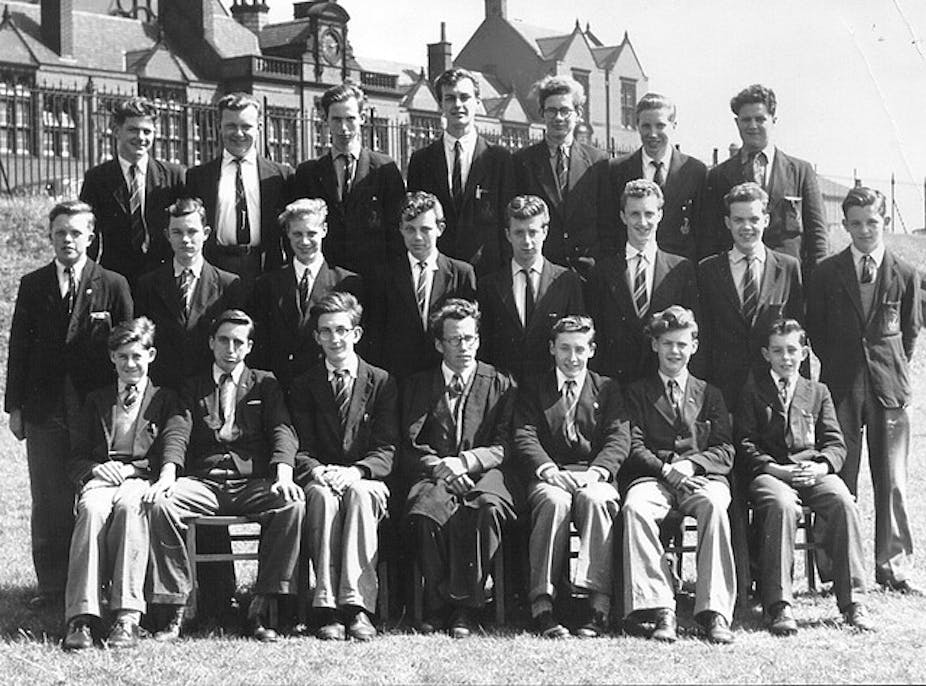Inequality and its rise across many developed societies poses threats of alienation and marginalisation and has been a feature of numbers of recent publications. Now research led by Simon Burgess at the University of Bristol has set out to address the longer term economic effects of selection in English education.
The title of their paper, Selective Schooling Systems Increase Inequality, poses an immediate challenge to those within the Conservative party who still contend that increasing the number of grammar schools would increase social mobility and hence reduce inequality. The current Tory policy is not to open any new grammar schools.
The evidence reported shows precisely the opposite: using data taken from the New Earnings Survey between 1974 to 1996, it shows that the earnings of those educated in areas where “selective” education was the norm were substantially more polarised than for those educated in similar but “non-selective” areas.
Contrasting the absolute value of earnings between the top and bottom 10% of earners in these matched areas, it found that the gap was substantially wider for those areas which were organised on selective lines than for those that were not.
In further analyses, matching individual earners’ characteristics, the paper shows that there is an even wider and more significant difference between the two education systems in the “earnings gap” between the top 10% of earners and the bottom 10% of earners.
An important aspect of this work is its emphasis on the nature of “selection” as a “double-edged” instrument. It applies to grammar schools which are the destination of the minority who are “selected”. But critically, it applies also to secondary-modern schools which are where the majority, those “not selected”, are educated.
End to selection no left-wing plot
The paper also provides a useful counter to the glib assertion that the rise of non-selective education was predominantly a left-wing political plot. The evidence relates to the period of history – much of it under the Thatcher administration – when many areas moved from “selective” to “non-selective” forms of educational organisation.
Debate in the 1970s and 1980s over grammar schools was incredibly polarised – not least because of Margaret Thatcher’s personal stance in favour of selective education, even though when she had been minister of education in the Heath government of the early 1970s she had approved the closure of more grammar schools than any other minister before or since. The closure or merging of grammar schools was often as a result of parental pressure over perceived inaccuracies in the selection process itself and of the consequent longer-term distortion of pupils’ career trajectories.
Surrey, West and East Sussex, Hampshire, Somerset, Leicestershire and Cheshire all closed grammar schools during this period – hardly bastions of left-wing ideology. It is in this context that the evidence provided by this study is so relevant to today’s debates.
Warnings about the divisive nature of the selective system have been voiced many times, but the recent dramatic description of grammar schools by Ofsted’s chief inspector of schools, Michael Wilshaw, as being “stuffed full of middle-class kids” was certainly eye-catching.
It recalls a 2007 comment on this issue by David Willetts, then Conservative shadow minister of education. He said, “We must break free from the belief that academic selection is any longer the way to transform the life chances of bright poor kids … there is overwhelming evidence that such academic selection entrenches advantage, it does not spread it”.
Not the main driver of today’s inequality
The new findings are in tune with these observations. But given the relatively small size of selective education today (there are 164 state grammar schools left out of over 3,000 secondary schools in England), it must be questioned whether this is one of the major engines driving the rise in inequality in Britain today.
That we are in such a period is clearly indicated in this chart from a 2010 book by Danny Dorling, now at the University of Oxford.

This graph shows the proportion of total national income accruing to the top 1% of earners in Britain over the period 1918 to 2005. Levels of inequality rose from a low of 6% in the late 1970s to levels closer to those of the 1920’s by the end of the period.
In a series of reports published between 2005 and 2013, the Sutton Trust (the mission of which is to improve social mobility through education) identified some of the barriers currently inhibiting this in Britain. The first deals with access to grammar schools, while the others explore the over-representation of the 7% of “public school” alumni in many senior professions. The reports show considerable “resistance to change” on this issue over the last decade years – implying substantial impediment to improved social mobility.
This is not unique to Britain, as shown by a new study by Joseph Stiglitz. It deals with the comparative situation in US where there is even greater evidence of the wealthiest reinforcing and protecting their access to disproportionate shares of the nation’s wealth.
Concern about these dangers is increasing. One of the most cogent contributors here is Thomas Piketty whose latest book paints a depressing picture of the self-reinforcing processes inimical to social mobility currently at work in many western societies. Piketty argues that inherited wealth instills inequality in the system from the very beginning. Is this the kind of society we wish to see as our future?

